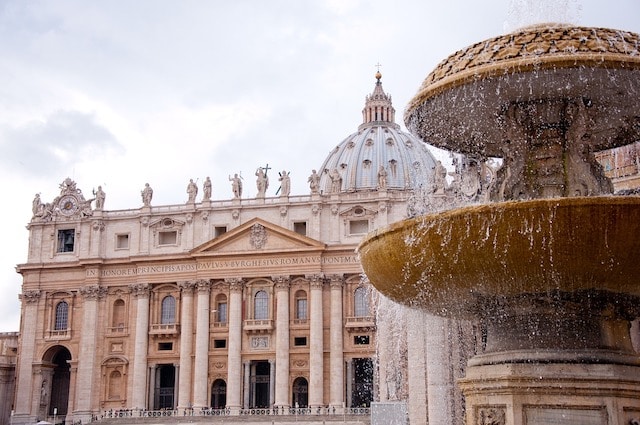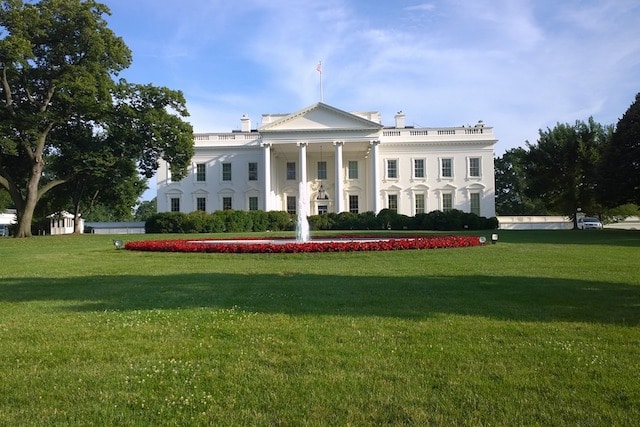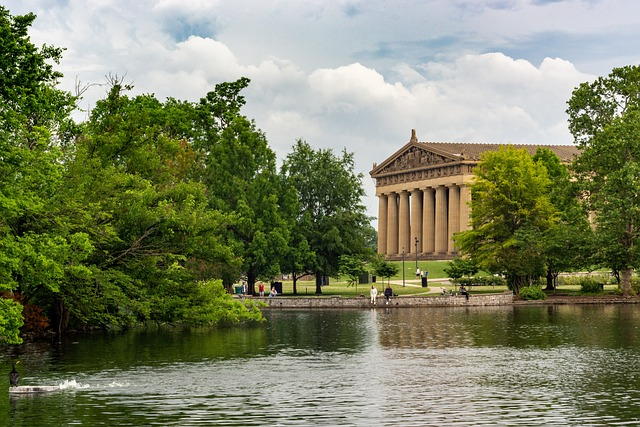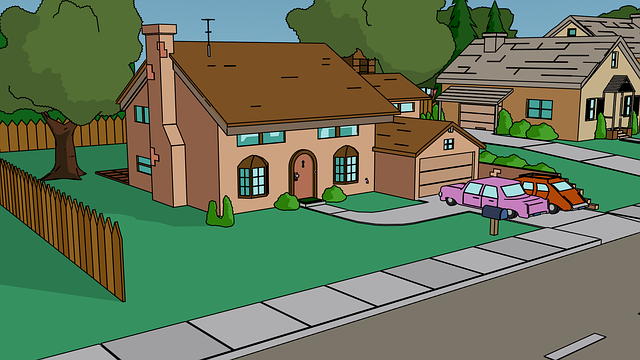Amazing Clones! 10 Surprising Landmark Replicas Across the World
Imitation is often called the sincerest form of flattery—much like how people claim bird poop brings good luck. These sayings circulate without much scrutiny. But what about replicas? Those peculiar, almost-perfect-yet-slightly-flawed copies of existing things?
Replicas aren’t usually meant to deceive. Instead, they’re like distant cousins of the original—similar in form but carrying their own quirky charm. Think of a backyard miniature Eiffel Tower or a diner’s knockoff Mona Lisa. Why do these exist? Because someone saw something extraordinary and thought: “I want that—but here, in my world.”
And honestly, that’s fascinating. Replicas transform mundane spaces into pockets of the extraordinary: a faux Roman statue in a mall? Unexpected. A replica spaceship in a small-town museum? Suddenly, the cosmos feels within reach. These “inauthentic” creations spark curiosity, laughter, or even wonder—proving that imperfection can make the unattainable feel intimately close.
10. There’s a Giant, Fake Vatican in Africa

Félix Houphouët-Boigny ruled Ivory Coast for over three decades, from independence in 1960 until his death in 1993. Like many long-serving leaders, his legacy is a mix of brilliance and excess. He transformed his country into one of Africa’s most prosperous nations—but prosperity, it seems, came with a side of ego.
Take his hometown, Yamoussoukro. In 1983, he declared this sleepy village the new capital, replacing bustling Abidjan. But what’s a capital without a landmark? So, he decided to build the largest church in the world—a near-exact copy of St. Peter’s Basilica in the Vatican.
Construction began in 1985, swallowing a staggering $300 million (some estimates say closer to $600 million). The result? The Basilica of Our Lady of Peace—a marble-clad, gold-cross-topped behemoth seating 7,000 (18,000 if you pack them in). The Vatican, slightly embarrassed, asked the architect to tweak the dome so it wouldn’t technically be taller than St. Peter’s.
Here’s the kicker: On a typical Sunday, only a few hundred worshippers show up. Meanwhile, the Pope’s one condition for consecrating the church—that a hospital be built next door—was met with a ceremonial cornerstone. Decades later, that lone stone still sits there, waiting for the rest of the hospital to materialize.
Houphouët-Boigny’s reign brought growth, but this monument? Pure vanity. A gleaming, half-empty testament to what happens when a leader’s ambition outpaces his people’s needs. And yet, you’ve got to admit—it’s one of the most absurdly fascinating buildings on Earth.
9. The Strange Obsession with Stonehenge Replicas Around the World

Any list of mysterious places is bound to include Stonehenge—and for good reason. This ancient monument has puzzled historians, archaeologists, and curious minds for centuries. While many of us take a quick glance at its towering stones, mutter a confused “Huh, weird,” and move on, others have become fascinated. So much so, in fact, that people keep rebuilding it in different ways all over the world.
Take Foamhenge in Virginia, for example. It’s exactly what it sounds like—a lifesize replica of Stonehenge, but made entirely out of styrofoam. While the original stones are massive and immovable, these foam blocks are considerably easier to handle, making for a quirky yet strangely compelling tribute.
Nebraska decided to take things up a notch with Carhenge, a version of Stonehenge built from old cars stacked and arranged in a nearly identical formation. Imagine Druids, but instead of ancient rituals, they worshipped classic automobiles.
Surprisingly, America has over two dozen ‘henges’ scattered across the country. Some are made of foam, others use trucks, and many are built from concrete, rock, or other sturdy materials to more closely mimic the original. But why are there so many? Honestly, it seems like the answer is as mysterious as Stonehenge itself—or maybe it’s just because people thought, “Why not?”
Regardless of the reason, these Stonehenge-inspired creations prove one thing: humanity’s fascination with ancient wonders never fades—we just like to give them a modern (and sometimes hilarious) twist.
8. Several Homes Have Knocked Off the White House

The White House is arguably the most famous house in the world. It’s not a palace or anything, but it is a home and the President lives there. It’s been featured in so many movies and TV shows that people around the world can instantly recognize it. It’s so appealing to some of those people that more than one has thought of living in their own version and having a replica home built.
Having a White House isn’t cheap, of course. It’s a big house. One in California that came complete with an Oval Office was listed for sale at $38.9 million in 2023. It features 11 bedrooms, nine full bathrooms, and five half baths, so over a dozen people can use a toilet at the same time if that’s ever a concern of yours.
The home was originally redesigned for the son of publisher William Randolph Hearst though the property dated back to 1878 before it was turned into a White House.
Other White House clones can be found across the US in Virginia, California, Texas, and Georgia, as well as international versions in Austria, China, and Iraq.
7. The Statue of Liberty’s Many Doppelgängers: From Paris to Lego Land

Hollywood loves destroying the Statue of Liberty—whether it’s ghostly joyrides, alien invasions, or kaiju smackdowns. But here’s the good news: Even if disaster strikes, we’ll never run out of Lady Liberty copies. The world is full of them, each with its own weird backstory.
We all know the original was a gift from France (thanks for the giant copper flex, guys). But did you know America returned the favor for France’s 100th Revolution anniversary? Yep, there’s a slightly smaller replica right in Paris, chilling near the Eiffel Tower like a tourist who won’t stop taking selfies.
Venture further, and things get wilder:
- Ukraine has one perched on a museum, staring judgmentally at passersby.
- Norway’s version stands in a quiet park, probably wondering how she ended up there.
- Denmark went full whimsy with a Lego Statue of Liberty—because why not?
Over in Japan, there’s not one, but three Lady Liberties. The most famous, in Odaiba, was actually a tribute to… France again? (Someone really liked Franco-American relations.)
Then there’s Brazil’s version—just 36 feet tall but with a real flaming torch (take that, New York). Israel has a mysterious 15-foot replica that seemingly appeared out of nowhere, while China’s most striking copy crowns the Tomb of the 72 Martyrs, honoring revolutionaries who fought imperial rule.
6. From Ancient Athens to Music City: The Story of Nashville’s Full-Scale Parthenon Replica

When the ancient Greeks built the original Parthenon in 447 BC, they created something extraordinary—a massive marble temple honoring Athena, crafted from 100,000 tons of stone hauled from quarries 10 miles away. For centuries, it stood as a symbol of Athenian power, art, and devotion.
Then, in 1897, something unexpected happened: Nashville built its own Parthenon.
Yes, you read that right. Tennessee’s capital, nicknamed “The Athens of the South” for its focus on education and culture, decided the best way to celebrate its 100th birthday was to construct a full-scale replica of the ancient Greek masterpiece. And they didn’t half-ass it—this thing is exact, from the towering Doric columns to the mind-boggling details.
Inside, visitors find a 42-foot-tall statue of Athena, draped in 8 pounds of gold leaf, just like the lost original. The doors alone weigh 7 tons each, because why go small when you can go ridiculously authentic?
Today, Nashville’s Parthenon isn’t just a quirky landmark—it’s a fully functional museum, hosting art exhibits and drawing tourists who never expected to find Ancient Greece in the middle of Tennessee.
5. The Real-Life Simpsons House: A Forgotten Piece of TV History

If a TV show sticks around long enough, certain elements beyond just the characters and story become legendary. Think of the fountain in the opening of Friends—it’s instantly recognizable. But few locations in television history have reached the iconic status of one of the most famous fictional homes ever: The Simpsons House. Even though the layout is hilariously inconsistent, with rooms appearing and disappearing as needed, fans can recognize the house in an instant.
Back in 1997, Pepsi decided to take this pop culture obsession to the next level by building a real-life replica of the Simpson family home for a raffle giveaway. The project cost $120,000, and the result was shockingly accurate. From Bart’s treehouse in the backyard to a fridge stocked with Duff Beer, they nailed every detail—even modifying the doorways to accommodate Marge’s hair.
But here’s where the story takes a strange turn. The local homeowner’s association absolutely hated the house’s bright yellow and orange color scheme, and when the raffle winner was drawn, no one stepped forward to claim it. Left without a winner, Pepsi picked another ticket, only to find the new recipient lived in such a remote area that a limo couldn’t even reach her house to deliver the news. Given the choice between the house and a cash prize, she took the money.
Today, the house still stands in Henderson, Nevada, but you won’t spot it in its original cartoonish colors. To appease the locals, it was repainted in more subdued tones. However, if you have a sharp eye, you might still be able to track down this strange, forgotten piece of TV history.
4. Flying a Pixar Dream: National Geographic’s Real-Life “Up” House Adventure
Most replicas celebrate iconic designs—Batmobiles, Hogwarts castles, maybe even a life-sized T. rex. But National Geographic took a different approach: They recreated the house from Up, a home best known for being ripped from its foundation by balloons and sent drifting into the sky. Why? Because science (and pure, joyful madness).
The team didn’t just build a cute model—they engineered a 2,000-pound, 16×16-foot miniature house and strapped it to 300 massive helium balloons, each eight feet tall. The result? A floating spectacle that reached 10,000 feet—taller than a 10-story building—with actual humans onboard (don’t worry, no one ended up stranded in South America like Carl and Russell).
Of course, this wasn’t a perfect replica. The real-life version was smaller, heavier, and, let’s be honest, lacked Dug the talking dog. But for a brief, glorious moment, childhood fantasy became reality. The house actually flew, proving that with enough balloons (and a disregard for FAA concerns), even the wildest dreams can get off the ground.
3. The Plum Island Pink House: A Home Built on Spite
Spite can be a powerful motivator, and few things showcase this better than the Plum Island Pink House—a home rumored to have been built entirely out of revenge during a bitter divorce.
As the story goes, in the 1920s, a couple went through an acrimonious divorce. The husband was required by court order to provide his ex-wife with an exact replica of their home. He followed the order to the letter but, in a spiteful twist, built it in a salt marsh, making it uninhabitable—since the decree never specified where the house had to be.
Over the decades, the home was occasionally used as a summer retreat, but since the early 2000s, it has been abandoned and now stands as a historical landmark.
However, there’s one small problem: the whole story might be completely untrue. There’s no definitive proof either way, so until someone uncovers the truth, let’s just enjoy the legend of this bizarre spite house.
2. The $250 Million Mansion That Came With a Fake Airwolf Helicopter – Because Why Not?
Remember Airwolf? That gloriously over-the-top ‘80s show about a supersonic stealth helicopter with more firepower than some small militaries? Of course you do. And apparently, so did the previous owner of a Bel Air mega-mansion who decided the perfect rooftop accessory was a life-sized (but very fake) Airwolf replica.
When this palace hit the market in 2017 for a cool $250 million, the listing boasted the usual absurd luxuries: 38,000 square feet, 12 bedrooms, a 50-car garage… and oh yeah, a non-functional Airwolf chopper permanently parked on the roof. Because nothing says “I’m a serious real estate investor” like a plastic tribute to a 40-year-old cult TV show.
Predictably, buyers weren’t lining up to drop a quarter-billion dollars on a house with a giant toy helicopter as its crown jewel. After two years of crickets, the place finally sold in 2019—for **94million∗∗(amere94million∗∗(amere156 million discount).
The new owner’s first move? No one knows if the Airwolf stayed or got the boot. But let’s be honest: If you’re spending that kind of cash, you gotta keep it. How else will guests know you’re the kind of person who takes life just seriously enough?
1. China’s Bizarre Obsession With Building Empty Western Cities

China has a strange fascination with Western architecture—one that borders on both admiration and absurdity. Across the country, developers have constructed eerily accurate replicas of famous European and American cities, complete with cobblestone streets, Gothic cathedrals, and even scaled-down versions of iconic landmarks. There’s just one problem: nobody lives in them.
Take Tianducheng, China’s Paris—a sprawling district in Hangzhou featuring a 1:3 scale Eiffel Tower, Haussmann-style apartments, and manicured gardens. It was designed to house 10,000 people, but today, it’s a ghost town, with empty streets and hollowed-out buildings.
Then there’s Yujiapu, a would-be Manhattan in Tianjin. Developers promised a glittering financial hub with skyscrapers mirroring Wall Street. Instead, it’s a half-finished wasteland of empty towers, abandoned mid-construction.
Even small towns aren’t safe from China’s copycat obsession. A developer spent $1 billion to recreate Hallstatt, Austria—a picturesque Alpine village—down to the last detail. The result? A flawless imitation with zero residents. Meanwhile, near Beijing, a replica of Interlaken, Switzerland sits empty, its Swiss chalets and mountain vistas untouched by actual Swiss people (or anyone else).
So why build these cities? Some were meant as tourist attractions, others as luxury housing for China’s elite. But most remain glittering monuments to failed ambition—places where the dream of a European or American fantasyland collided with reality.
























